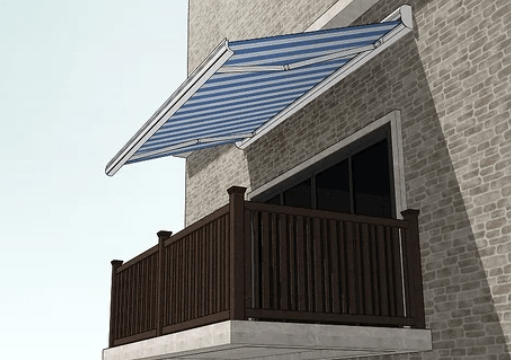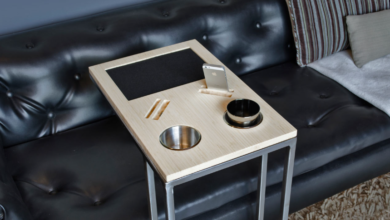How Weather Affects Balcony Structures and How to Protect Yours

Balconies are an essential extension of modern homes, offering a space to unwind and enjoy the outdoors. However, exposure to changing weather patterns can take a toll on their durability and appearance. From heavy rains and intense UV rays to fluctuating temperatures, these elements gradually weaken balcony structures, often leading to issues that require attention. In Melbourne, where weather can shift dramatically, understanding how to protect your balcony is crucial to prolonging its lifespan and preventing costly repairs.
Whether you’re dealing with moisture infiltration or sun-related wear, knowing how to address these challenges is key to maintaining a sturdy and appealing space. This guide provides practical steps to safeguard your balcony against weather damage, ensuring it remains a safe and enjoyable retreat. And if you encounter signs of deterioration, timely balcony structural repairs in Melbourne can prevent further damage, helping you protect both your investment and your peace of mind.
Understanding the Impact of Weather on Balcony Structures
Balconies are consistently exposed to the elements, making them vulnerable to a variety of weather-induced stresses. Over time, this exposure can compromise their structural integrity and aesthetic appeal. Rain, for instance, can seep into small cracks in the concrete or tiles, gradually expanding these gaps through cycles of wetting and drying. This process, known as freeze-thaw action in colder months, weakens the materials and can even lead to structural issues if left unaddressed.
Sunlight, particularly intense UV rays, can cause materials to fade, warp, or become brittle, especially in Melbourne’s warm summers. Similarly, high humidity levels promote the growth of mold and mildew, which can further deteriorate balcony surfaces. Wind is another factor that should not be underestimated, as it can loosen fittings, cause cracks, and create points of weakness over time.
Understanding how these elements impact your balcony is the first step in proactive care. By identifying the typical effects of weather on balcony materials and structure, homeowners can take preventive measures, ensuring their balcony remains strong and appealing despite Melbourne’s varying climate.
Common Weather-Related Damages to Balconies
Weather-related damage to balconies can manifest in several ways, each impacting the structure’s longevity and safety. One of the most prevalent issues is cracking, which often results from moisture infiltrating the surface and expanding with temperature changes. Over time, these cracks can widen, allowing even more water to penetrate, leading to further weakening of materials. Without timely intervention, these cracks may compromise the balcony’s stability and pose safety risks.
Another common issue is rust and corrosion, particularly in balconies that incorporate metal railings or support structures. Moisture from rain and humidity accelerates the corrosion process, especially in coastal areas where salt air exacerbates rusting. Left unchecked, rust can weaken metal components, which are critical to the overall stability and security of the balcony.
Additionally, water infiltration and pooling are significant problems that arise from inadequate drainage or damaged waterproofing. Water that doesn’t drain properly can seep into the structure, causing mold and mildew growth. These fungi not only degrade the materials but can also impact indoor air quality if the balcony is close to living spaces.
By recognizing these common weather-induced damages, property owners in Melbourne can prioritize balcony structural repairs before minor issues escalate. Preventing and addressing these issues promptly will help keep your balcony safe, functional, and visually appealing for years to come.
Preventing Water Damage and Moisture Buildup
Water damage is one of the leading causes of structural issues in balconies, especially in regions like Melbourne, where rainfall can be unpredictable. To protect your balcony from the detrimental effects of water, it’s essential to invest in proper waterproofing and drainage solutions. Waterproofing acts as a barrier, preventing moisture from seeping into the balcony’s surface and causing cracks or internal structural damage.
Start by ensuring that all surfaces, particularly tiled or concrete balconies, are sealed with a high-quality, weather-resistant sealant. Regularly reapplying this sealant can help maintain the balcony’s resilience to water infiltration. Additionally, check that your balcony has an effective drainage system in place. Drainage channels or scuppers should be free of debris, allowing water to flow away from the structure rather than pooling on the surface. Standing water not only damages the materials but can also promote mold and mildew growth, further weakening the structure over time.
Routine inspections are key to spotting early signs of water-related damage. Look for any areas where water might be collecting or where the sealant may be peeling. By taking these preventive steps, you can protect your balcony from moisture buildup and avoid costly balcony structural repairs in Melbourne that often result from prolonged water exposure.
Shielding Your Balcony from Sun Damage
Continuous exposure to sunlight, especially intense UV rays, can gradually degrade balcony materials, leading to fading, warping, and brittleness. Over time, UV radiation breaks down surface finishes, making wood dry and brittle, while concrete can begin to develop micro-cracks. This type of sun damage not only affects the aesthetic appeal of the balcony but also its structural integrity.
To protect your balcony from the effects of harsh sunlight, consider applying UV-resistant coatings to surfaces prone to sun exposure. These coatings act as a protective barrier, helping to prevent fading and deterioration caused by prolonged sun exposure. For wooden surfaces, regular staining or oiling can maintain the wood’s natural resilience and color, reducing the risk of cracking and warping.
Another effective method for minimizing sun damage is to install shade solutions, such as awnings, pergolas, or outdoor blinds. These additions offer both UV protection and a comfortable shaded area to enjoy, even on the hottest days. Additionally, if you’re planning to furnish your balcony, opt for outdoor furniture made from materials specifically designed to withstand sun exposure, such as UV-treated plastics or powder-coated metals.
By taking these steps, you can maintain the durability and appearance of your balcony, ensuring it remains a welcoming and comfortable space year-round.
Preparing for Extreme Weather Events
Melbourne’s climate can bring sudden storms, high winds, and heavy rainfall that put additional strain on balcony structures. Preparing your balcony to withstand these extreme weather events can make a significant difference in preventing damage. High winds can loosen railings, weaken structural connections, and even displace items, while heavy rain can overwhelm drainage systems, leading to water buildup and potential structural issues.
To prepare for these events, start by securing any loose components, such as railings, bolts, or fixtures. Reinforcing the structure with weather-resistant materials, especially for areas exposed to high winds, can prevent issues such as loosening or warping. Ensuring your drainage system is fully functional is also essential; clear out gutters and drains to allow rainwater to flow freely and reduce the risk of water pooling.
If your balcony includes glass or lightweight furniture, consider using heavier or anchored options during storm season. Adding windbreaks, like outdoor screens or lattice structures, can also help deflect high winds while providing additional privacy.
These proactive measures not only protect your balcony from damage during extreme weather but also enhance its durability and safety, giving you peace of mind in any season.
Routine Maintenance Tips to Protect Your Balcony
Regular maintenance is the key to prolonging your balcony’s life and preventing small issues from escalating into costly repairs. Routine inspections allow you to catch signs of wear and weather damage early, ensuring your balcony remains safe, functional, and visually appealing.
Start by thoroughly inspecting all surfaces for any cracks, rust spots, or signs of water damage. Even minor cracks can expand over time due to weather exposure, so addressing them promptly with sealing or patching can prevent further deterioration. For metal elements, remove any visible rust and apply rust-resistant paint to protect against future corrosion. Regularly cleaning your balcony’s surface also removes dirt and debris that can trap moisture, promoting decay and mold growth.
Keep the drainage system clear of leaves, dirt, and other blockages that may obstruct water flow. A well-maintained drainage system is essential to prevent water from accumulating on the surface, which can lead to both cosmetic and structural damage.
In addition, consider seasonal maintenance—reapplying sealants, tightening loose fixtures, and checking for damage after extreme weather events. With consistent upkeep, you can extend the lifespan of your balcony, preserving its safety, value, and aesthetics year-round.
Read also: Tips for Finding the Right Roof Repair Service for Your Home
Conclusion
Protecting your balcony from the effects of weather is essential to preserving its beauty, functionality, and safety. From preventing water damage and UV deterioration to preparing for extreme weather events, proactive measures can make a substantial difference in the longevity of your outdoor space. By understanding how various weather elements affect balcony structures, you can take simple yet effective steps to minimize damage and avoid costly repairs down the line.
Routine maintenance, including regular inspections and timely repairs, is a crucial part of this process. Whether it’s reinforcing railings, applying protective coatings, or ensuring efficient drainage, these practices will help keep your balcony in optimal condition. With a well-maintained balcony, you can continue to enjoy your outdoor retreat, no matter the season or weather.




